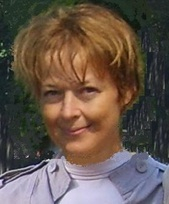Professor
Faculty of Physics
- E-mail:
Degree: Doctor of Sciences
- Personal page in Russian:
- https://sfedu.ru/person/aemyasnikova
- Personal page in English:
- https://sfedu.ru/en/person/aemyasnikova

Font size
Line height
Color

Professor
Faculty of Physics
Degree: Doctor of Sciences

Research interests:
I and my team study effects of strong long-range electron-phonon interaction. The problem is of impotance due to 30 years old enigma of high-temperature superconductivity (HTSC). The mysteru remains unsolved because of difficulty of simaltneous taking into accpunt strong electron correlations and strong electron-phonon interaction. We carry out approaches to such systems theoretical investigation.At the present time single polaron and bipolaron of the large radies are well studied. Our team studies systems with high carrier concentrations. We develop a method to calculate analythically photoemission spectra from sych systems. This has allowed to explain such effects universally observed in photoemission spectra (ARPES) of all the HTSC cuprates as coexisting broad bands and "vertical dispersion" patterns. Now we apply our model to study charge ordering in it and its period and to compare them with the experimentally found in the HTSC cuprates recently.
Besides, in the last years I have joined to a large team studying theoretically self-assembly and physical properties of different nanosystems using the methods of the condensed matter physics.
Research projects:
Our research project is devoted to development of the model taking into account simultaneously strong electron correlations and strong long-range electron-phonon interaction at high carrier concentration. Recently the model was succesfully applied to explaination of the high-energy part of the ARPES spectra of cuprates.Now we are working at its application to describe carge ordering occurring in HTSC cuprates, its period, symmetry and temperature behavior. Simulataneously we are trying to calculate the optical conductivity spectra from HTSC cuprates on the base of our model and our new method of analytical calculating the ARPES spectrum.
Teaching: